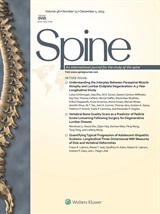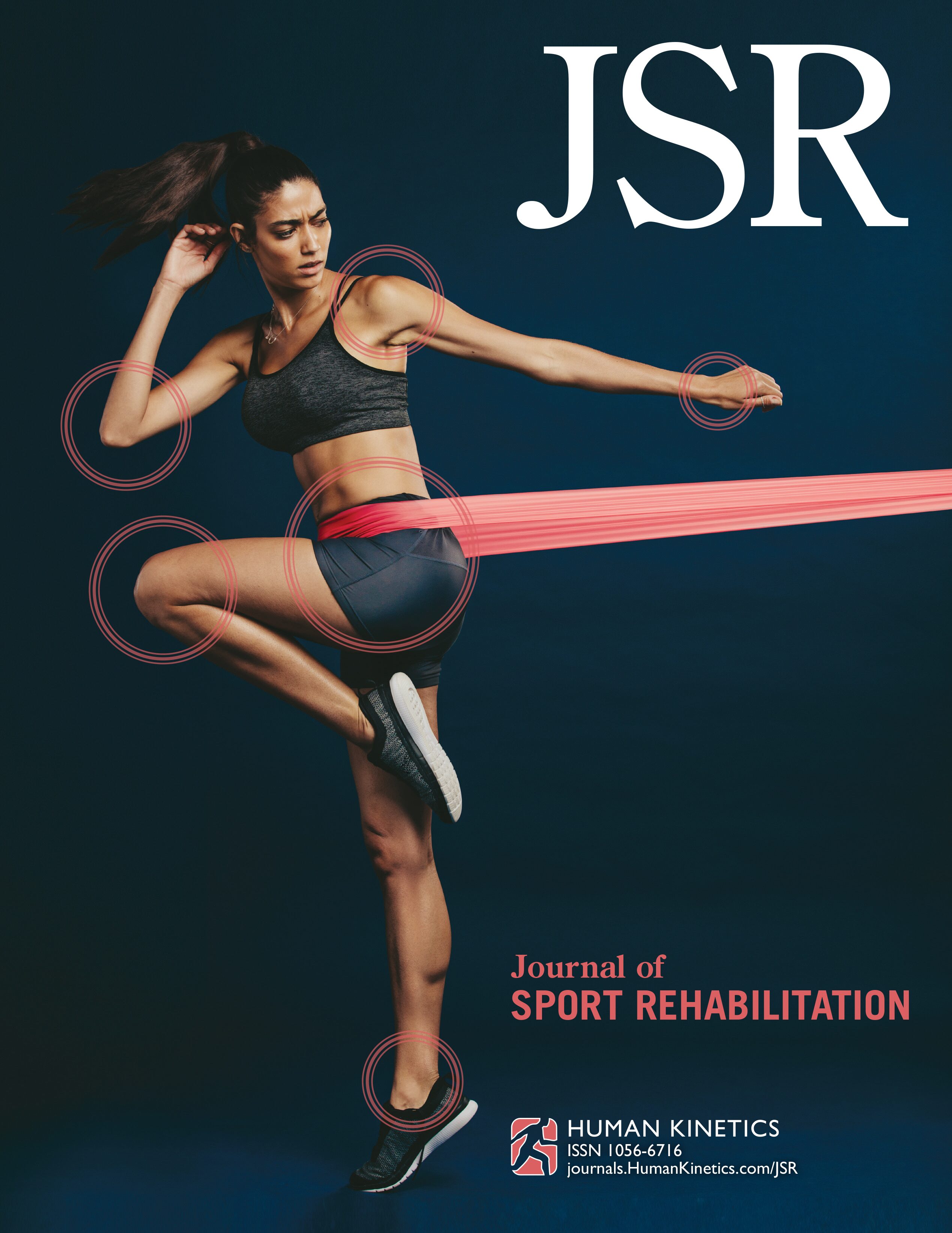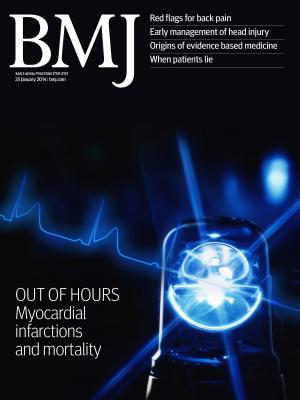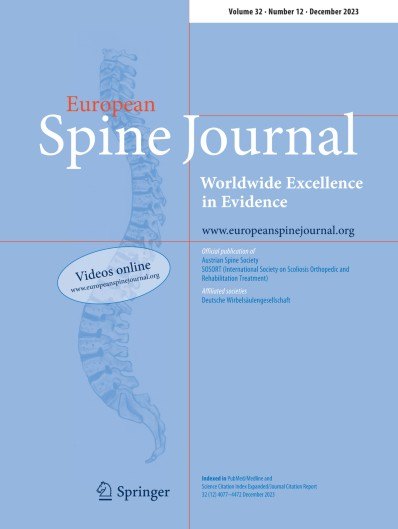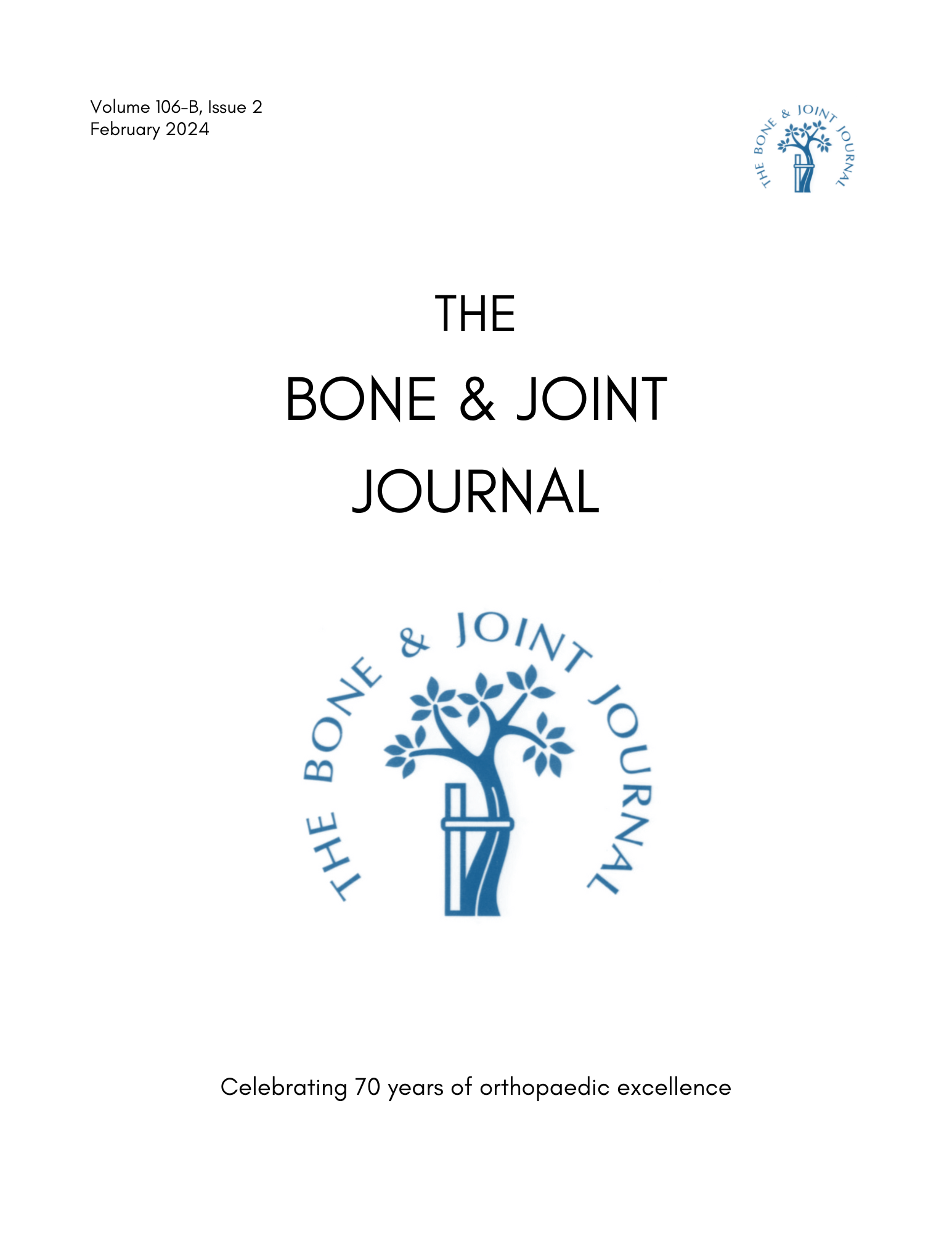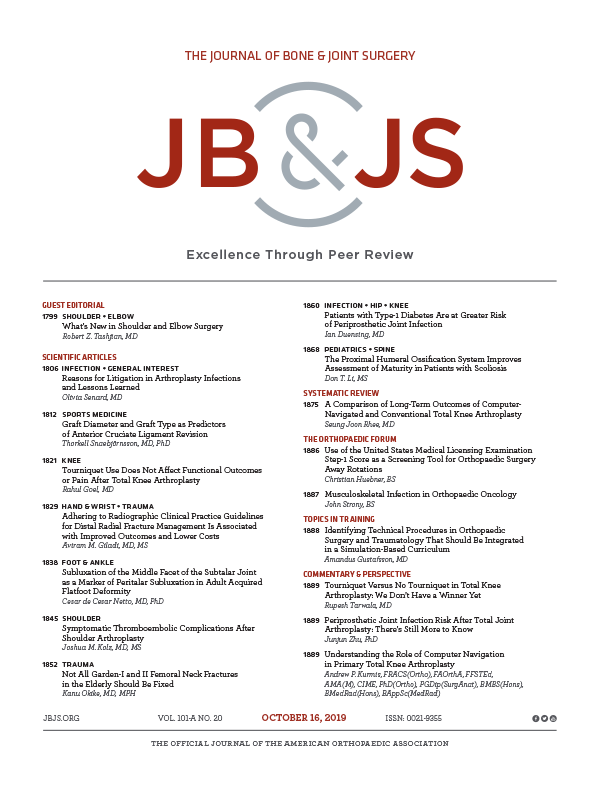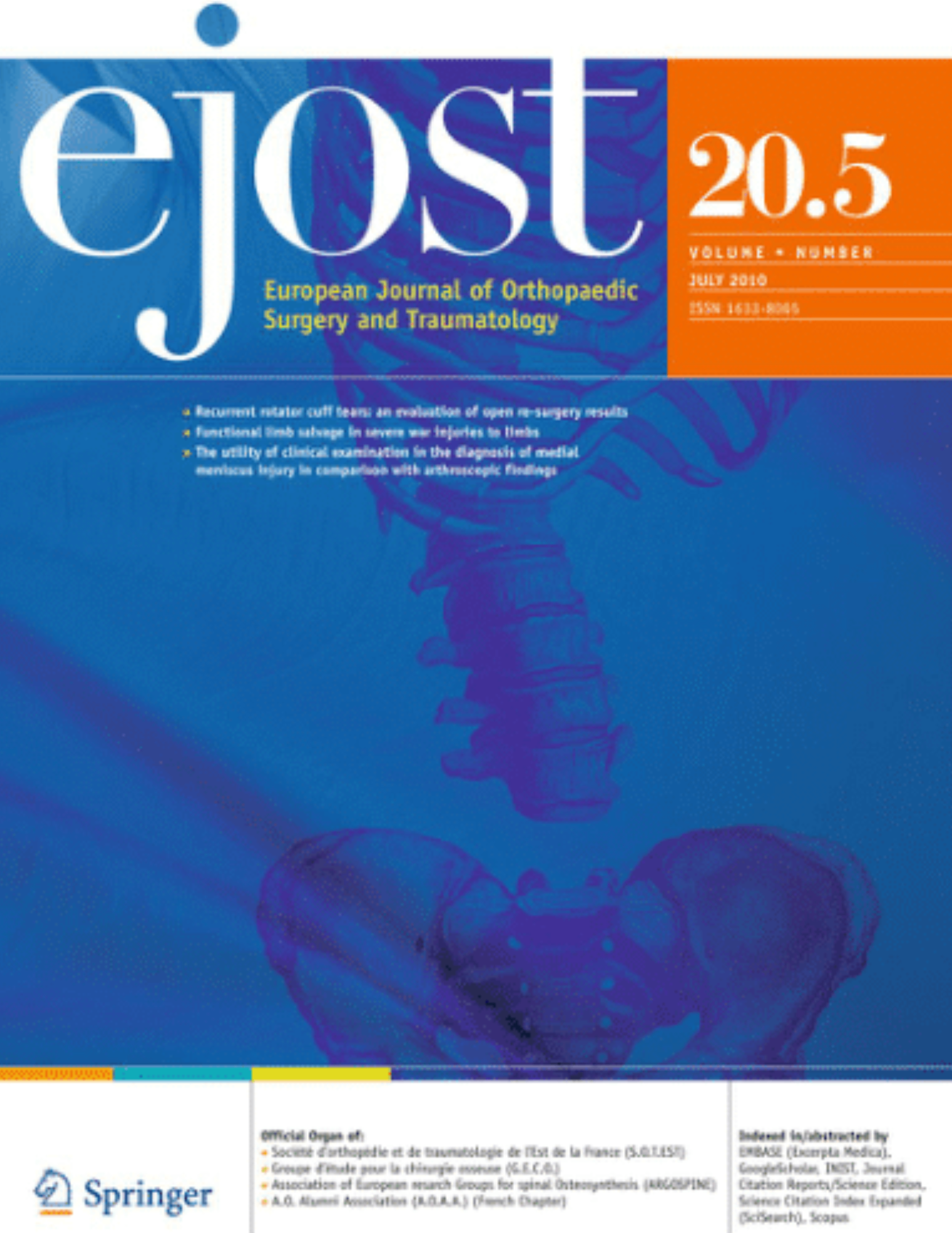PeerView
You are viewing the most viewed ACE Reports by Orthopaedic Surgeons over the last 30 days in all specialties.
Displaying
100%
①
Synopsis:
Forty-seven patients with single-level cervical radiculopathy were randomized to receive either BRYAN CDA (cervical disk arthroplasty; n=22) or ACDF (anterior cervical discectomy and fusion; n=25) in a prospective, randomized, controlled trial conducted as a Food and Drug Administration Investigational Device Exemption trial.The primary outcomes of interest included visual analog scales (VAS) for neck and arm pain, neck disability index (NDI), and reoperation rates.The follow-up rate was 91.3%.Both groups demonstrated significantly improved NDI, VAS arm pain, and VAS neck pain scores at 20 years compared to preoperative scores.However, there were no significant differences between CDA and ACDF groups at 20 years for NDI, VAS arm pain, and VAS neck pain scores.Reoperations were reported in 41.7% of ACDF patients and 10.0% of CDA patients. Both CDA and...
Read More »
Level 1 RCT
①
Synopsis:
Eight randomized controlled trials, including 689 patients with chronic neck pain, were included in this systematic review and meta-analysis comparing telerehabilitation versus control interventions.Pooled outcomes of interest included pain intensity, disability, fear-avoidance beliefs, and quality of life.The meta-analysis showed a significant reduction in pain and a significant reduction in disability in the telerehabilitation group compared to the control. The findings suggest...
Read More »
Level 1 Meta Analysis
①
Synopsis:
This systematic review and meta-analysis included 14 randomized controlled trials involving 698 patients with low back pain.The studies compared the effects of respiratory exercises to routine lower back pain treatments.Pooled outcomes of interest included pain intensity and physical disability.The results showed that respiratory exercises significantly reduced pain intensity (p < .00001) and improved physical disability (p < .00001). The main findings...
Read More »
Level 1 Meta Analysis
①
Synopsis:
This systematic review and meta-analysis included 24 randomized controlled trials with 1711 participants diagnosed with sciatica due to lumbar disc herniation.It compared surgical treatment, primarily discectomy, to non-surgical treatments and epidural steroid injections.The primary outcomes assessed were leg pain and disability, while secondary outcomes included adverse events, back pain, quality of life, and treatment satisfaction.The pooled results indicated that discectomy provided moderate reductions in leg pain in the short term, with diminishing benefits over time.Effects on disability were smaller, showing only minor improvements.The long-term outcomes revealed no significant differences between surgical and non-surgical treatments. These findings suggest...
Read More »
Level 1 Meta Analysis
①
Synopsis:
Two hundred twenty patients undergoing degenerative spine surgery were randomized to receive either enoxaparin 40 mg subcutaneously once daily (n=110) or rivaroxaban 10 mg orally once daily (n=110).The primary outcome was the incidence of venous thromboembolism (VTE) (DVT and PE).Secondary outcomes included reoperation rate, length of hospital stay, surgical site infection, CSF leakage, and other complications.Outcomes were assessed at 2 weeks and 3 months postoperatively.Overall, the results of the study revealed that rivaroxaban was non-inferior to enoxaparin for VTE prevention, with significantly lower reoperation rates and shorter hospital stays. These findings suggest...
Read More »
Level 1 RCT
①
Synopsis:
Four hundred thirty-seven patients with lumbar spinal stenosis were randomized to receive either unilateral laminotomy with crossover (UL, n=122), bilateral laminotomy (BL, n=119), or spinous process osteotomy (SPO, n=117).The primary outcome of interest was the mean change in Oswestry Disability Index (ODI) score at five years.Secondary outcomes included the proportion of patients classified as success (≥30% reduction in ODI), changes in EQ-5D, Zurich Claudication Questionnaire (ZCQ) scores, Numeric Rating Scale (NRS) for leg and back pain, Global Perceived Effect (GPE) scores, and rates of subsequent spinal surgery.Outcomes were assessed at baseline, 3 months, 1 year, 2 years, and 5 years.Overall, the results of the study revealed no significant differences in ODI improvement or any secondary outcomes between the three techniques. These findings suggest...
Read More »
Level 1 RCT
①
Synopsis:
One hundred patients with single-level lumbar disc herniation were randomized to receive either biportal endoscopic discectomy (BED; n = 50) or microscopic discectomy (MD; n = 50).The primary outcome of interest was the Oswestry Disability Index (ODI) at 12 months.Secondary outcomes included surgical site pain, scar appearance (POSAS), serum creatine phosphokinase (CPK) ratio, and rates of wound complications.Outcomes were assessed at 2 weeks, 3 months, 6 months, and 12 months.Overall, the results of the study revealed that ODI scores were equivalent between the two groups at 12 months.BED was associated with reduced early postoperative pain, better cosmetic scarring, lower CPK levels, and fewer wound dehiscence events. These findings support...
Read More »
Level 1 RCT
①
Synopsis:
Two hundred sixty-five patients with single-level cervical radiculopathy were randomized to receive either posterior cervical foraminotomy (n=132) or anterior cervical discectomy with fusion (n=133).The primary outcomes were procedural success (based on Odom criteria) and reduction in arm pain (measured by VAS).Secondary outcomes included neck pain, Neck Disability Index, Work Ability Index, quality of life (EQ-5D-5L), treatment satisfaction, and complication rates, including reoperations.Outcomes were assessed at multiple time points up to 2 years.Overall, the results of the study revealed that posterior surgery was noninferior to anterior surgery for both primary outcomes, with similar secondary outcome profiles and adverse event rates. These findings suggest...
Read More »
Level 1 RCT
①
Synopsis:
Sixty-seven patients with Garden III femoral neck fractures were randomized to receive either closed reduction and internal fixation (CRIF) with capsulotomy (n=32) or CRIF alone (n=35).The primary outcome was the incidence of avascular necrosis (AVN).Secondary outcomes included non-union rates, Harris Hip Score (HHS), blood loss, and operative parameters.Outcomes were assessed at 3 and 6 months.Overall, the results of the study revealed that the capsulotomy group had a lower incidence of AVN and non-union, along with significantly better early functional outcomes and faster fracture union. These findings suggest...
Read More »
Level 1 RCT
①
Synopsis:
Eighty patients with single-level cervical spondylosis were randomized to receive uncovertebral joint fusion (UJF) (n=40) or end plate space fusion (ESF) (n=40).The primary outcome was the fusion rate at 3 months postoperatively.Secondary outcomes included complications and patient-reported outcomes (JOA, NDI, VAS-arm, and VAS-neck scores).Outcomes were assessed at 3, 6, and 12 months.Overall, the results revealed significantly higher early fusion rates in the UJF group at both 3 months (66.7% vs.13.2%, p < 0.0001) and 6 months (94.1% vs.66.7%, p = 0.006), with no significant difference at 12 months.PROMs and complication rates were comparable between groups. These findings suggest...
Read More »
Level 1 RCT




 LOGIN
LOGIN


